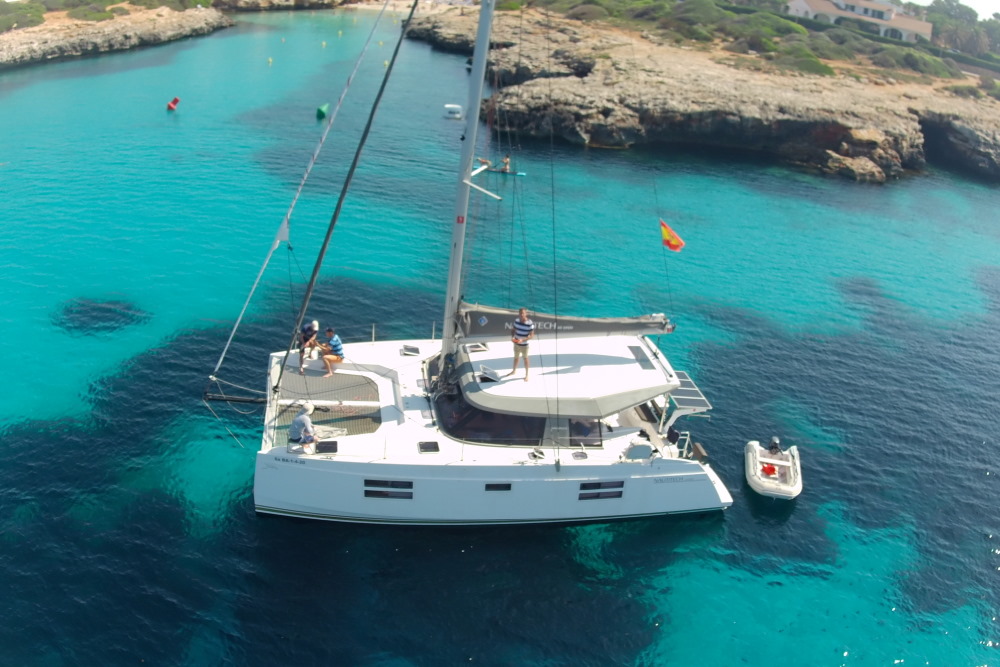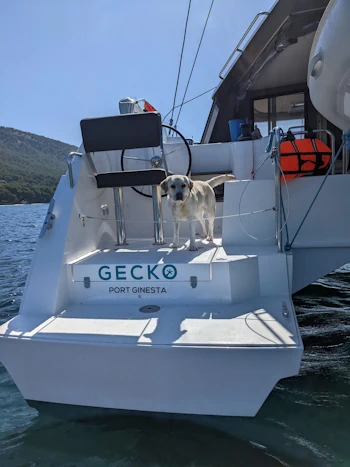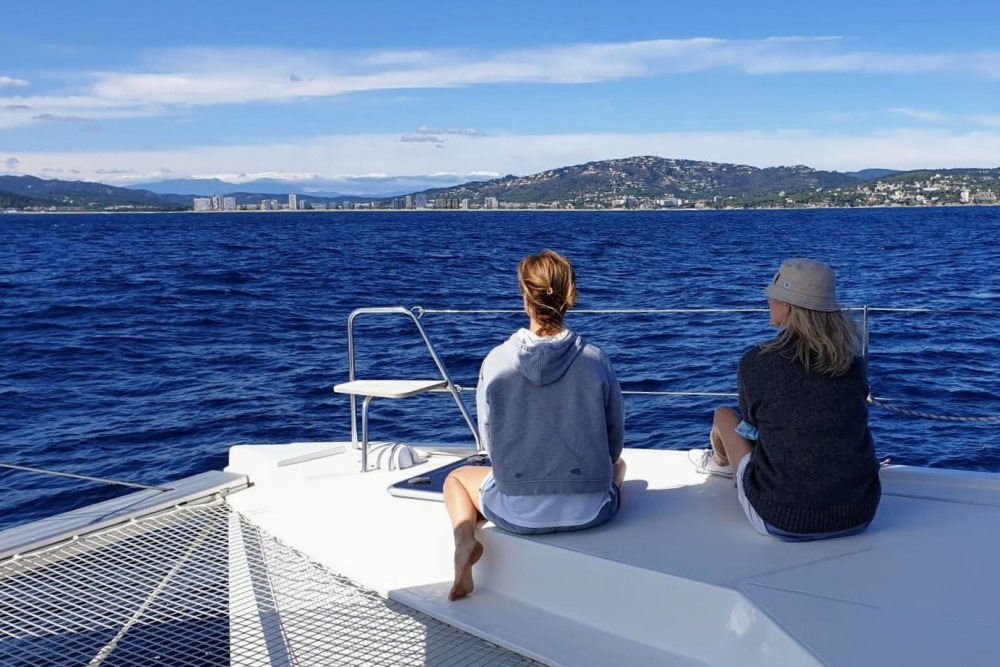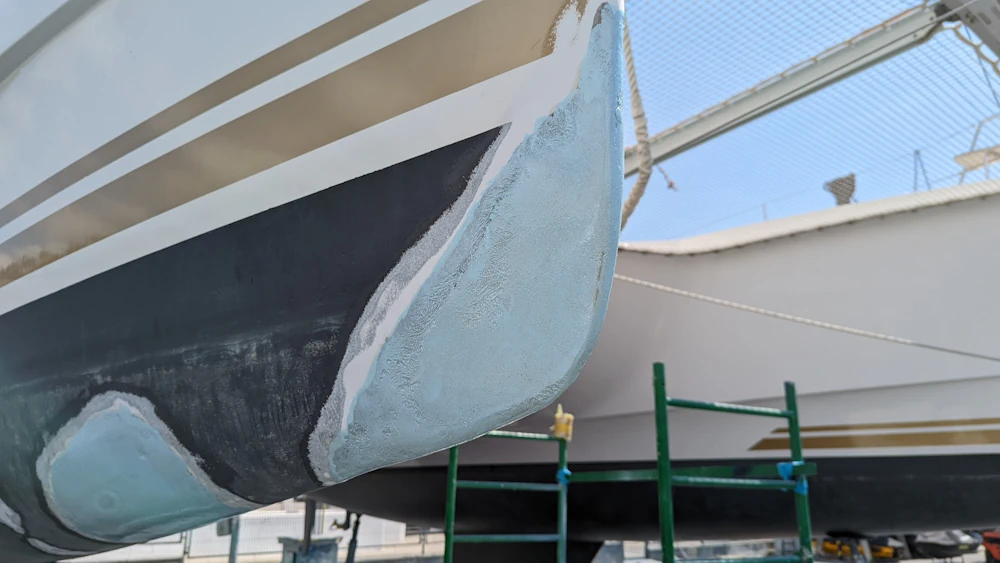Can you Make Money Chartering a Catamaran?
Can you Make Money Chartering a Catamaran?
We recently sold our catamaran after 3 years of ownership. Can you make money chartering your own boat? The short answer? With one boat it´s hard. But theoretically possible. Read on to find out.

We bought Gecko, a Nautitech 40 Open, in November 2019. The plan was to enjoy sailing her around Barcelona and the Balaeric Islands (we did plenty of that) while offsetting the running costs and maintenance with skippered charters managed through a small company in Port Ginesta, our closest marina.
Unfortunately, the plan didn’t quite work out. Despite Dream Yacht Charters posting a record year for rentals in the 2022 season, we only managed one 2 week charter in August. From a personal perspective, the project was a success. We’ve improved our sailing skills, logged many miles and explored Mallorca, Menorca and the Costa Brava.
But from a commercial perspective, not so successful. So what went wrong?
This article is a summary of our experience over the last 3 years. If you are are thinking of doing something similar, hopefully this will help you do the numbers.
Year One, 2020

The project started pretty well, despite the onset of Covid in early 2020. There are quite a few costs to absorb in the start up phase of a project like this to get the boat ready for charter. There’s the cost of the boat of course, plus mooring fees, insurance, maintenance and so on, and you’ll need to spec’ out the boat over and above the standard levels so you can charter with the appropriate safety kit (life rafts, life jackets, radar reflector, EPIRB and so on).
As a rule of thumb, you’ll need to spend between 5% & 10% of the value of the boat on running costs every year, depending on how much you do yourself. So let’s say the boat cost you €500k, you are looking at spending €50k a year. Now, if you are also enjoying the boat yourself, you can’t allocate this all to the business. Let’s call it €30k to break even on a cash flow basis (ignoring asset depreciation, more on that later). If you can cover more of the maintenance yourself, this cost comes down.
In year one, the operation paid for the running costs, and we even had a bit left over for contingencies. All good! So effectively, we had use of the boat for the cost of depreciation of the asset (the yacht). As second hand values remained strong, this wasn’t a big number.
Year Two, 2021
Covid pressure were starting to ease, but we ended the year with fewer bookings than the year before. This was a warning signal and we should have switched rental companies at this point.
We lost a whole week with a dispute with one of the bookings: a group of guys in their early 20s who were kicked off the boat by the skipper for excessive partying and dangerous behaviour. I’ve nothing against party boats, just not on Gecko, and these clients should have been turned down in favour of families early on in the booking process.
But again, we just about managed to cover our costs (the main aim) and missed the end of the contract period in September. I found a few professional looking companies offering charter management at the Barcelona Boat Show (Salon Nautico), but the timing didn’t quite work out, so we decided to press ahead with our current supplier.
The relationship started to deteriorate in the back end of 2021. Let’s just call it a difference in opinion on how to run the charters.
Morale of the story: if there is a problem, fix it fast or move on to another supplier immediately. We should have done the latter.

Year Three, 2022
The final year was not great on the numbers front. The charter agency only managed to sell two slots, one 2 weeker and a 10 day slot in August. Unfortunately, the skipper on the first charter collided with something hard on the way back into Port Ginesta, smashed the bow and damaged the starboard hull and keel. We had to cancel the second booking to fix the boat and any money we made on the first was swallowed up by the excess on the insurance and an additional paint job.
We’d enjoyed some fantastic trips on Gecko over the year (Mallorca, Costa Brava, Costa Daurada) but the rental side of the business wasn’t bringing in enough money and was taking up a large amount of time. We decided that, unfortunately, the model wasn’t working. On the positive side, boats weren’t depreciating much and the market was strong. We decided to sell. The silver lining was that the boat hadn’t depreciated much since our purchase due to lack of supply in the market.
So What Went Wrong?
The Partner
There are a number of reasons why things didn’t work out, but the main one was the deterioration of the relationship with the rental company. There are advantages to working with a small company (more flexibility for using the boat for example), but we experienced many disadvantages too, such as lack of maintenance resource, inflexible and inconsistent pricing, ineffective marketing, and surprisingly no repeat custom and no existing customer base.
We weren’t impressed with the standard of skipper that they were able to supply, and they were getting terrible reviews from customers.
The company we worked with also ran charters on their own catamaran. This took priority of course and I think they just lost interest in chartering Gecko. They were trying to do too much with not enough resource and we were last on the priority list for marketing, sales and maintenance.
Location
Port Ginesta isn’t ideal for running skippered charters either. Port Ginesta is close to some great sailing areas, but it’s still a 95 nm sail to get to Soller in Mallorca. We’d have been better off sending the boat off to the islands for 3 months for charter. Or basing her in Barcelona for more day-trip charters. The original plan was to send the boat over to the islands during the high season. It turned out that the charter company didn’t have the connections to make this happen.
There’s definitely a market for skippered charters on a 40 foot cat, but it’s not as big as the bare boat market. That wasn’t an option with this company as they didn’t have a team to sort any issues out mid charter. Again, we’d have been better off sending the boat out to the islands with a larger, professional yacht charter company in the islands for 3 months.

Learnings
I don’t regret buying Gecko as we have had some great times on her, and I also have to factor in the fact that she has helped us grow our online business: katamarans.com.
So what would I do if I did it all again? Here are some of my main learnings:
- Think hard about where you base the boat to maximise annual revenue. In our case, that should have been in the Balaeric Islands (at least for 3 months of the year) or in the city for the day-trip market.
- Partner with a larger company with a good reputation that has the resource for maintenance, customer service (in multiple languages) and the marketing skills to make the project a success. Book a boat through them- how was the marketing? How was the state of the boat? What was the pricing? Were there “extras” which wouldn’t generate commission for you? How was the customer service? Aim for a company that has the resources to manage at least 5 boats.
- What are their processes like? Do they have any? For example, do they run a prioritised maintenance schedule? How do they support the skippers? (with technical questions for example). Do they have a Renter’s manual? What’s the support like off-base?
- For smaller boats (40′), then bare boat is the bigger market. You can succeed with skippered charters, it’s just harder. Hand the boat over for 3 months and request it back in the same condition (this will increase wear and tear though which may increase your depreciation).
- If you just want to do skippered, you are better off with a 45′ boat and bigger. I would even go Owner’s Version and go for less, higher quality rentals.
- For skippered charters, go with a company with a large pool of professionals and make sure you meet them before you hand the keys over. Ideally, go for a sail with them beforehand to check them out.
- Run the business through a company.
- A realistic aim is to cover the running costs on your boat. If you can cover the running costs and the depreciation you are doing really well. If you can make a profit, you are smashing it!
- If you are in a relationship that isn’t working, make the decision fast and switch companies. Otherwise another year rolls along.
Summary
It is possible to make this work if you keep your expectations modest and just aim to cover the running costs on the boat (we managed this for 2 years). Then you are getting to use the boat for just the cost of the depreciation. In our case, the depreciation was pretty low although we did have a one off tax bill to pay initially as we registered the boat with a Spanish flag.
If you can cover the depreciation as well, even better. The silver lining for us was that the boat didn’t go down in value much due to the strong market.
It is very hard to turn a profit on one boat, but not impossible: you probably wouldn’t have much personal use out of it.
Main points:
- Spend time researching and getting to know your business partner before signing. Book a charter through them.
- If the relationship goes sour and you can’t fix it, move on quickly.
- Base yourself inside the cruising area to maximise your revenue potential.
- Remember to enjoy the boat!
If you have further questions, contact us, we’d be happy to help.
